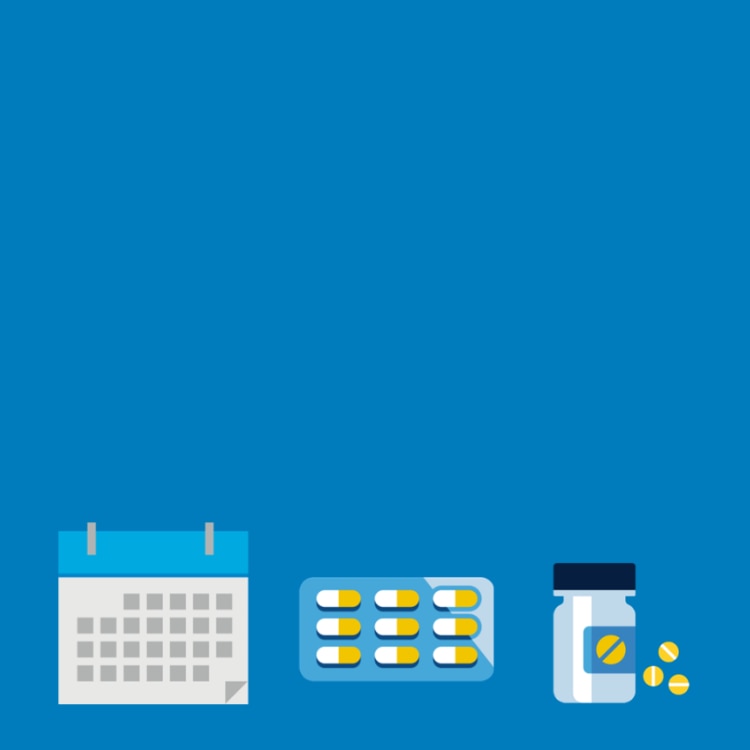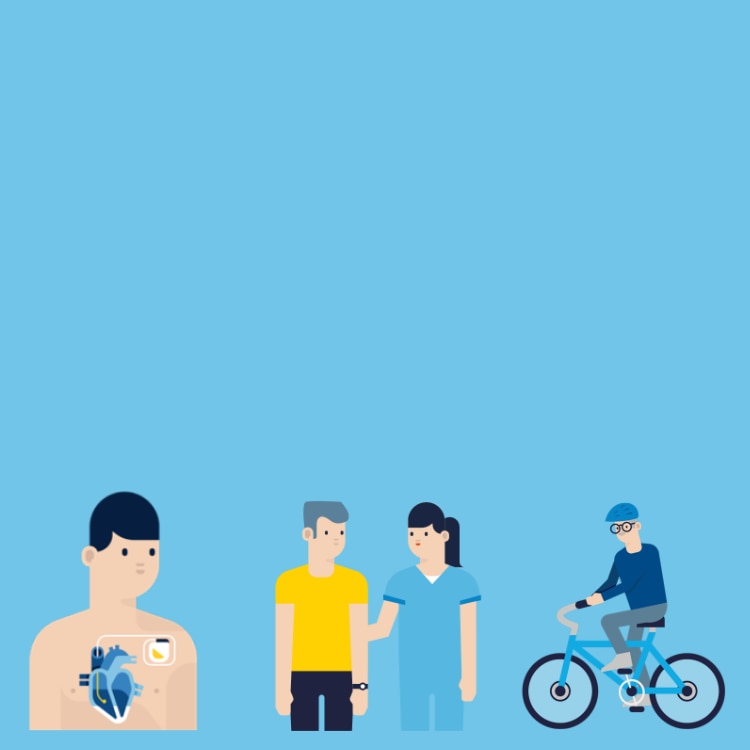

TAKE 5 to get to know parkinson's and discover DBS therapy
April 11th is World Parkinson's Day

This year again, we are collaborating with the EPDA (European Parkinson’s Disease Association) to raise awareness of Parkinson’s disease – a chronic and progressive movement disorder, in which symptoms worsen over time. It affects over 6 million people worldwide – a number that will double by 2040.1
As the disease progresses, the amount of dopamine produced in the brain decreases, leaving a person unable to control movement normally. The causes of the disease are still unknown.2
There are therapies to help people with Parkinson’s as their condition progresses.
LEARN MORE ABOUT PARKINSON’S AND ADVANCED THERAPIES
Incidence: over 6M people1 affected worldwide in 2015

This number will double by 20401
About 1/10 people with Parkinson's are under 50 years old1
Parkinson's disease symptoms and progression1,3
Primary symptoms of Parkinson's

want to know more facts about Parkinson's?1,3
Download the guide
men are 1.5 times more likely to have Parkinson's than women⁴
Get help and advice on being a Parkinson's carer
Download the guide
Learn if DBS could be an option for you or a loved one with Parkinson's

when to consider DBS therapy for Parkinson's

DBS is highly effective in properly selected patients.6
It is a surgery that provides patients with relief from many Parkinson's disease symptoms through electrical stimulation.
We've been developing DBS therapy for over 30 years
More than 175,000 people+ worldwide have been treated with Medtronic DBS therapy. DBS can help reduce the movement symptoms of Parkinson’s disease and could improve your quality of life.

5 steps to check you're eligible for DBS therapy¹,⁷
1. You have been diagnosed with Parkinson's for at least 5 years5
2. Movement symptoms not adequately controlled with your current medication
3. You currently respond to Levodopa medication

4. You have had movement symptoms for a minimum of 4 months
5. You have had side effects from your current medication
Medtronic has been the leader in DBS therapy for 30 years

Want to know more about Medtronic DBS therapy?
Download the brochureLearn more about getting DBS therapy
DBS therapy works like a pacemaker for your heart. The treatment sends electrical pulses into an area of your brain that controls movement. These pulses disrupt some of the brain’s messages that cause the symptoms of Parkinson’s disease.
The therapy works 24 hours a day with minimal maintenance or effort.8

5 things to expect from DBS surgery
1. Your specialist will evaluate if DBS is right for you
2. An MRI or CT scan will be performed to capture images of your brain
3. A physician will implant thin wires in the brain and a small device under the skin of the chest

4. Your doctor will turn it on and adjust it to your symptoms
5. You may be able to get back to your life while attending checkups with your doctor
European Parkinson’s Disease Association. What Is Parkinson’s? https://www.epda.eu.com/about-parkinsons/what-is-parkinsons/. Accessed 14 Dec. 2020.
Lang AE, Lozano AM. Parkinson’s disease. N Engl J Med. 1998;339(15):1044–1053. First of two parts.
European Parkinson’s Disease Association. Motor Symptoms. https://www.epda.eu.com/about-parkinsons/symptoms/motor-symptoms/. Accessed 14 dec. 2020.
Are men at greater risk for Parkinson’s disease than women?, Wooten G., J Neurol Neurosurg Psychiatry 2004;75:637–639
Parkinson’s UK. “Deep Brain Stimulation for Parkinson’s.” Accessed 10 Dec. 2020. https://www.parkinsons.org.uk/sites/default/files/2020-02/B123_DBS_FINAL_WEB.pdf
Medtronic Supplemental Analysis, Supplement to EPDA website update re patient barriers and claims- v17- Sept-2015
OkunMS, Foote KD. Parkinson’s disease DBS: what, when, who and why? The time has come to tailor DBS targets. Expert Rev Neurother. 2010 December ; 10(12): 1847–1857.
“Deep Brain Stimulation – Advantages, Risks and Conditions Treated.” Accessed 14 Dec. 2020. https://www.aans.org/en/Patients/Neurosurgical-Conditions-and-Treatments/Deep-Brain-Stimulation#:~:text=Stimulation%20settings%20can%20be%20modified,therapy%2C%20when%20they%20become%20available.
+ Number of unique patients implanted (i.e. “new patients”) as of January 2020.
Brief statement
Information contained herein does not replace the recommendations of your healthcare professional. For further information, contact your Health Care Professional.